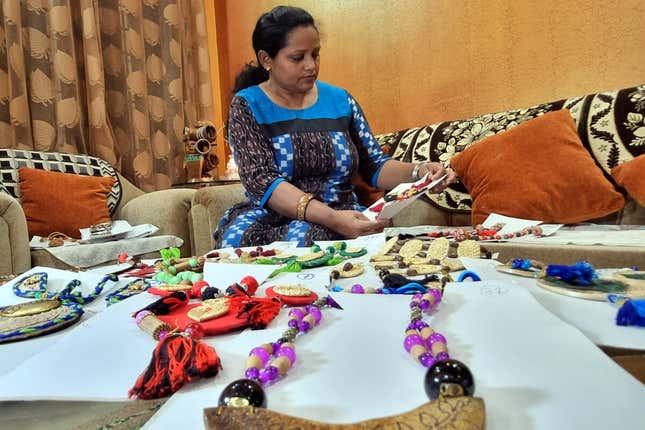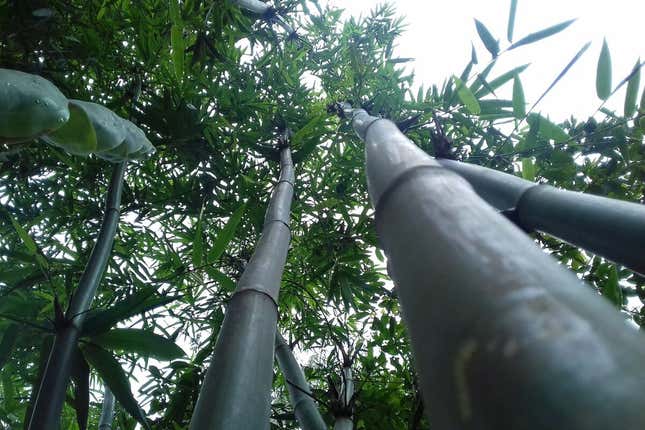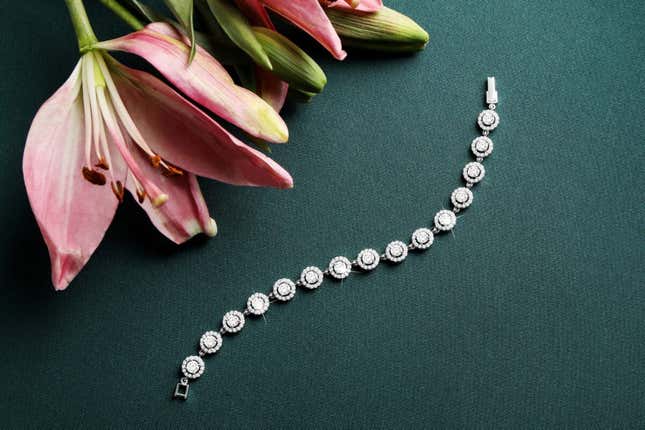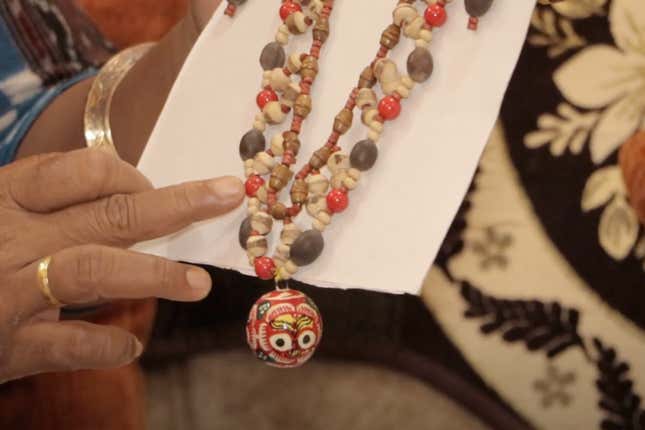Indians are thinking beyond gold, silver, and diamond, spawning a whole new breed of brands
As a teenager living in Odisha, Priyadarshini Das always had an eye for creativity. She would pick up seeds, bamboo branches and any other natural materials available around her house and make earrings and accessories for herself. Priyadarshini would wear most of her creations and occasionally gift them to a friend. However, with time and other responsibilities, this hobby faded, until it was re-discovered six years ago by her husband, who chanced upon a bamboo earring she had designed.
“My husband, who works in the fashion industry, was impressed with the design and encouraged me to start again,” says Das. “I had been a homemaker all along and was reluctant to start something new but took it up upon insistence of my family. I started making jewellery from mostly bamboo.”

Since then, 2017 to today, Das is a well-known name in Odisha’s eco-friendly jewellery sector and has established her brand called ‘Ecodarshini.’ People call her the ‘Green Queen,’ and she sells fashion accessories made from bamboo, golden grass, waste wood, palm leaves, betel nuts, handicraft fabric and seeds that are not perishable. The colours used in the jewellery are also organic and she ensures minimal waste in the making of a product.
In India, jewellery is synonymous with gold, diamond and silver. But there is a growing consciousness towards eco-friendly and sustainable jewellery which has resulted in several local and international brands, with environment-friendly statement fashion pieces, mushrooming in the country.
Towards more sustainable materials
Bamboo artisan Rajiv V K says sourcing bamboo is not a major concern primarily because of its easy availability. “A lot of people are engaged in bamboo plantations and the only thing is to figure out a way to procure it. Bamboo takes only five years to mature, so procurement is not hard. Bamboo can serve as an alternative material in construction work, crafts and also jewellery,” Rajiv told Mongabay-India.

“The only drawback is that the process of making jewellery from bamboo takes time,” adds Das. “We have to soak raw bamboo in water for a week and then boil it in lemongrass to remove the stink. Once this is done, then we proceed with bamboo cutting and designing. The cost we incur is only for the labour and time.” Das also conducts training workshops for women of indigenous communities, to help them become financially independent.
“No doubt, gold and diamond jewellery will always retain its importance,” Das adds. “But, there is a lot of scope for alternate jewellery as well. I believe we are going back in time. Earlier, our grandmother would cook in clay utensils and now it is coming back with modified designs. Similarly, the jewellery from natural products will also start getting more prominence. The key is quality, design and proper marketing.”
Among innovative materials being used for jewellery are lab-grown diamonds – a fairly new sector. Lab-grown diamonds have the same optical, physical and chemical properties like that of the mined diamonds and are made either from high-pressure, high-temperature (HPHT) or chemical vapor deposition (CVD).

Limelight, a luxury brand established in 2019, offers CVD diamonds at a considerably lower cost than natural diamonds, as there are no mining costs incurred.
“Lab-grown diamonds are comparatively better for the environment simply because they are not mined,” says Pooja Sheth Madhavan, MD and founder of Limelight diamonds. “They are grown above in labs in exactly the same manner and therefore do not involve digging 150 kilometres below the earth to extract the diamonds. As a result, it saves on the huge destruction of land and water that is associated with mining. Besides, many labs that consume electricity have begun switching to renewable sources or additional sustainable benefits.”
The process begins with a thin layer of a mined diamond (referred to as “seed”) that is placed in the plasma reactor. Then the same gases are infused as found below the earth and under specific temperature and pressure conditions, carbon begins to separate from the gases and form layers on the mined diamond. This slowly grows into a rough lab-grown diamond rock bearing the exact same carbon composition, chemical, thermal and physical properties as a mined diamond.
For gold jewellery too, a certification called “Fairmined gold” is gradually gaining ground. Fairmined gold guarantees that the mined gold is extracted keeping in mind the best environmental practices and also supports the small-scale mining communities. However, the cost of fairmined gold is significantly higher than normal gold and it is yet to catch up in India.
Not all that glitters is gold
Like a lot of sectors, the jewellery sector in India is also marred by greenwashing challenges.
Besides the small-scale set up by individuals like Das, several artisanal brands, who are promoting sustainable and eco-friendly jewellery, have come up in the last few years.
‘Saguna Baug,’ for instance, has a bamboo jewellery collection, with prices ranging from Rs200 to Rs1,000. The jewellery at ‘Vie’ uses discarded buttons made from biodegradable materials such as coconut shells, wood, river shells, as a base product to design their jewellery.
Though a report published in 2014, suggests that mined diamonds use 6.8 times more water and 2.14 times more energy than lab-grown diamonds, lack of more data regarding production of lab-grown diamonds makes it difficult to analyse their carbon footprint.
A lot of brands also claim ‘sustainability’, while selling recycled gold and diamond. However, the claim does not consider whether the base material is extracted in an eco-friendly manner.
India ranks fourth globally in gold recycling and the growth of the country’s gold refining industry is estimated to have increased by 1,500 tonnes between 2013 and 2021. While recycled gold decreases the impact on the environment and might be neutral as it was not mined, it is still not eco-friendly, as its original source remains untraceable.
“Sustainable jewellery is an upcoming market, so there are not many big players involved yet. At least, the jewellery made from bamboo, clay and other natural materials are being done by conscious individuals who are prioritising the environment over profit. So, the research is also limited but will grow as the industry expands. However, as seen in the sustainable textile sector, the entry of the big players had resulted in a lot of greenwashing. If it happens in the jewellery sector also, it would not only be a huge environmental risk but also demoralise the small players in this field who are working diligently,” says Shalini Mathur, who has a PhD in sustainable textiles and is an expert on the subject.

Mathur asserts a need for behavioural change, which should be inculcated from a young age itself.
“Sustainable textiles are expensive, but (sustainable) jewellery is affordable. The only need is to educate the people, with emphasis to the current generation, on the concept of sustainability. Once they know, they have a choice to buy something affordable, and also be proud of it, there will be a transition. Sustainability is a long path towards a change, so while it takes time, the important thing is to keep informing the people, until it becomes a part of the lifestyle,” she says.
—
This article first appeared in https://qz.com/
Seeking to build and grow your brand using the force of consumer insight, strategic foresight, creative disruption and technology prowess? Talk to us at +971 50 6254340 or engage@groupisd.com or visit www.groupisd.com/story



